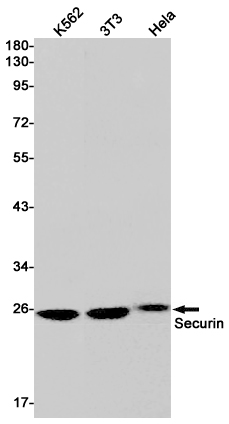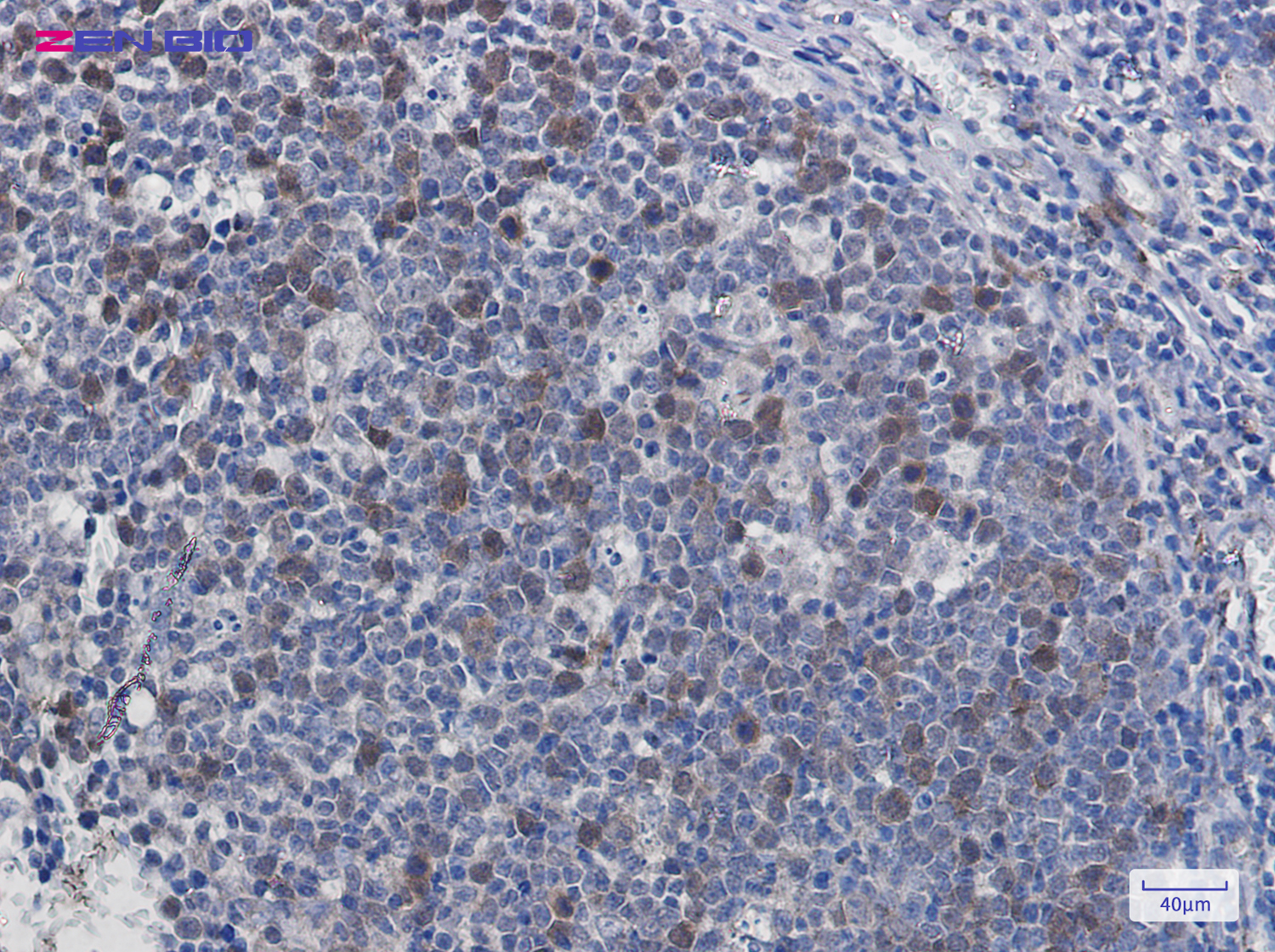-
Product Name
Anti-Securin Rabbit antibody
- Documents
-
Description
Securin Rabbit polyclonal antibody
-
Tested applications
WB, IHC-P, ICC/IF, FC, IP
-
Species reactivity
Human
-
Alternative names
EAP1; PTTG; HPTTG; TUTR1 antibody
-
Isotype
Rabbit IgG
-
Preparation
Antigen: A synthetic peptide of human Securin
-
Clonality
Polyclonal
-
Formulation
Supplied in 50nM Tris-Glycine(pH 7.4), 0.15M Nacl, 40%Glycerol, 0.01% sodium azide and 0.05% BSA.
-
Storage instructions
Store at -20°C. Stable for 12 months from date of receipt.
-
Applications
WB: 1/1000-1/5000
IHC: 1/20
ICC/IF: 1/20
FC: 1/20
IP: 1/20
-
Validations

Western blot detection of Securin in K562,3T3,Hela cell lysates using Securin Rabbit pAb(1:1000 diluted).Predicted band size:22kDa.Observed band size:25kDa.

Immunohistochemistry of Securin in paraffin-embedded Human tonsil using Securin Rabbit pAb at dilution 1/20
-
Background
Swiss-Prot Acc.O95997.Regulatory protein, which plays a central role in chromosome stability, in the p53/TP53 pathway, and DNA repair. Probably acts by blocking the action of key proteins. During the mitosis, it blocks Separase/ESPL1 function, preventing the proteolysis of the cohesin complex and the subsequent segregation of the chromosomes. At the onset of anaphase, it is ubiquitinated, conducting to its destruction and to the liberation of ESPL1. Its function is however not limited to a blocking activity, since it is required to activate ESPL1. Negatively regulates the transcriptional activity and related apoptosis activity of TP53. The negative regulation of TP53 may explain the strong transforming capability of the protein when it is overexpressed. May also play a role in DNA repair via its interaction with Ku, possibly by connecting DNA damage-response pathways with sister chromatid separation.
Related Products / Services
Please note: All products are "FOR RESEARCH USE ONLY AND ARE NOT INTENDED FOR DIAGNOSTIC OR THERAPEUTIC USE"
